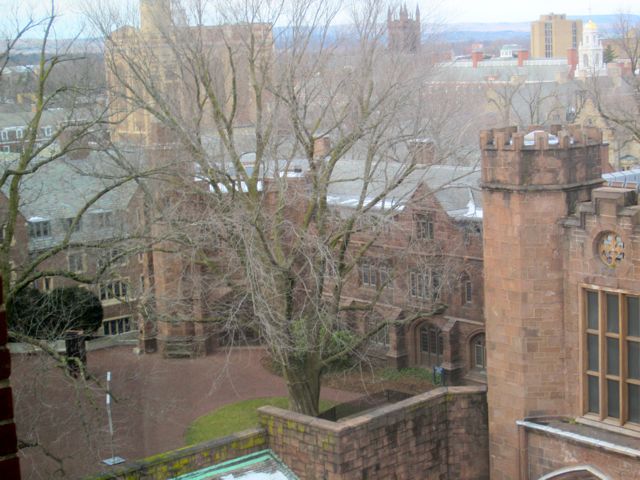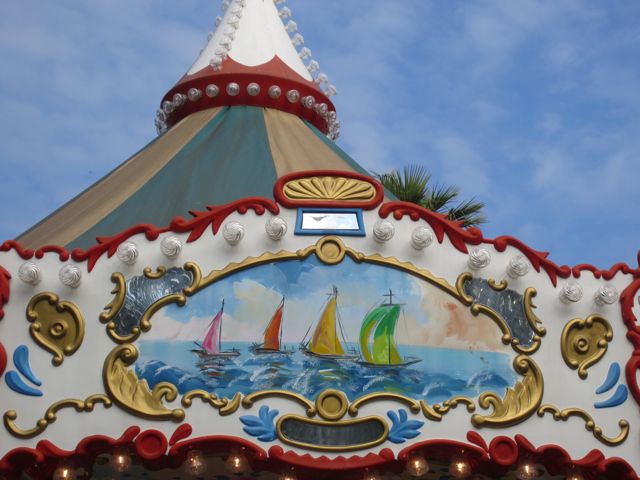Every once in awhile, when an occasion merits, we like to travel up to New Haven, Connecticut to the Yale University Gallery of Art. It's an easy ride from Grand Central and a pleasant one as the railway borders Long Island Sound once you reach the Nutmeg state.
When you reach New Haven, you enter through a beautiful train station.
I recommend a taxi to the Gallery on Chapel Street,
which is in the heart of the Yale Campus and near the Green.
The Yale University Art Gallery has just completed a renovation and expansion. In fact, three buildings have been joined to form one museum. These include the 1953 modernist structure by Louis Kahn, the 1928 Old Yale Gallery and the 1866 Street Hall.
A costumed figure from the African collection.
The straw in the last straw in au courant couture.
A glass bead assemblage of a bird in the African gallery.
The collection has been rearranged and hung in beautiful, light-filled spaces which incorporate old and new architecture when possible.
A view from the fourth floor gallery on a gray day in January.
A signboard for The Société Anonyme by un artiste anonyme.
The inaugural special exhibit at the Yale Gallery is "The Société Anonyme -- Modernism for America." The Société Anonyme, Inc. was an organization founded in 1920 by the artists Katherine S. Drier, Marcel Duchamp, and Man Ray as America's first "experimental museum" for contemporary art.
The founding artists of The Société Anonyme.
The original gallery was at 19 East 47th Street in New York City.
It cost 26 cents to visit the first exhibition.
The organization showed works by renowned artists such as Constantin Brancusi, Piet Mondrian, Man Ray and Joseph Stella. The above painting of a crane is by Joseph Stella.
Suzanne
When I saw this portrait of artist, Suzanne Phocas, a member of the Société Anonyme, I was enchanted. With her little 1920s bob and sweet smile, she is truly lovely.
Child with Dog, 1925-26 by Suzanne Phocas
Suzanne was one of the lesser known artists in the Société Anonyme. Her work is idiosyncratic and uses naive and cubist forms. She was born in Lille, France and lived in Greece as a child.
This Kurt Schwitters construction is one my favorite pieces in the exhibition.
There are several wonderful Jean Arp constructions as well.
The Painting kind of looks like my hats, don't you think?
Two gallery goers.
The main floor lobby space provides a tranquil sitting area.
A fitting adieu.
a Femme and a Fleur
"Morning in the Flower Garden" by Emil Nolde.
The collection of The Société Anonyme was given
to Yale University under the joint
auspices of the Société Anonyme (in 1941)
and the Katherine S. Drier Bequest (in 1953.)
À Bientôt!




























































